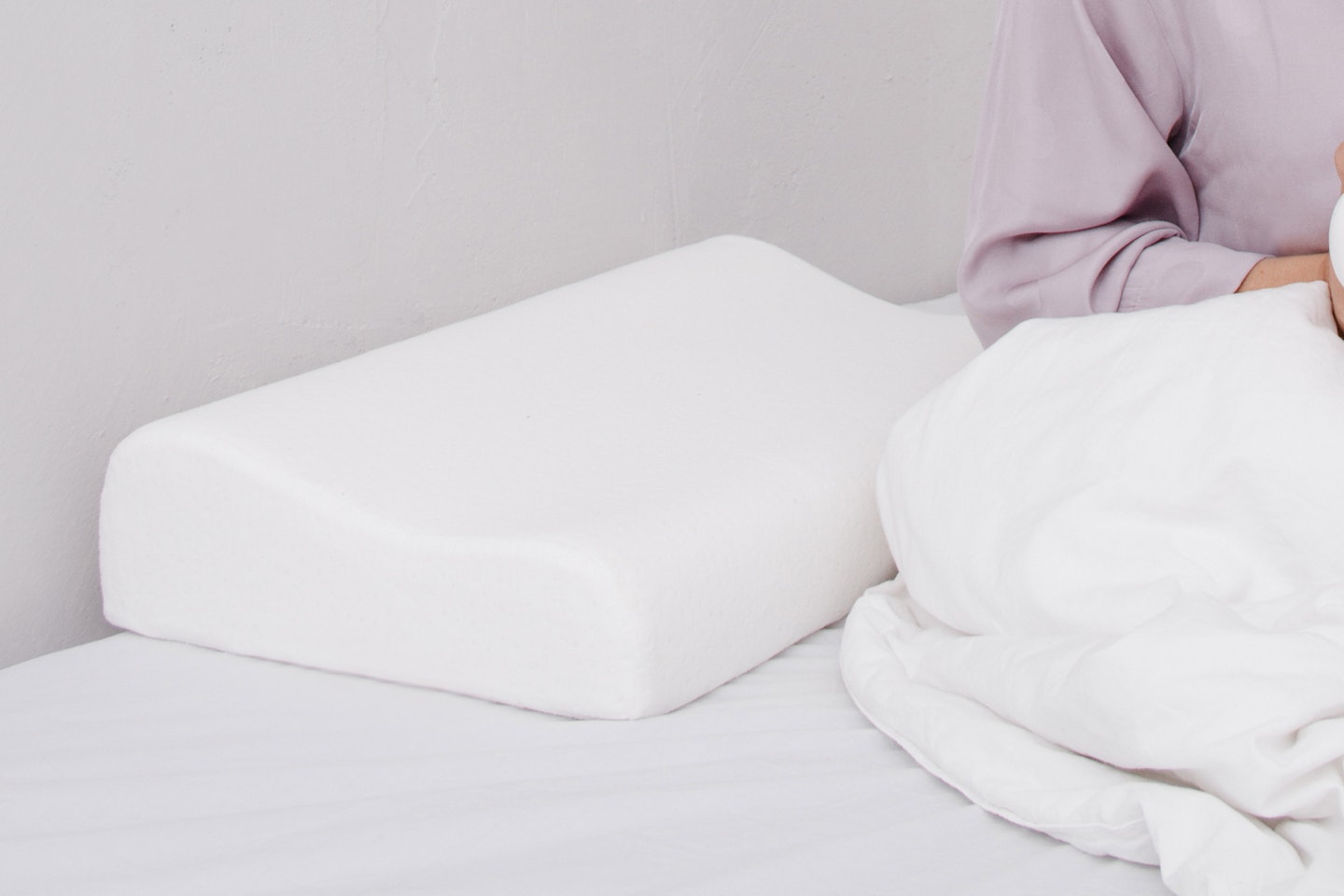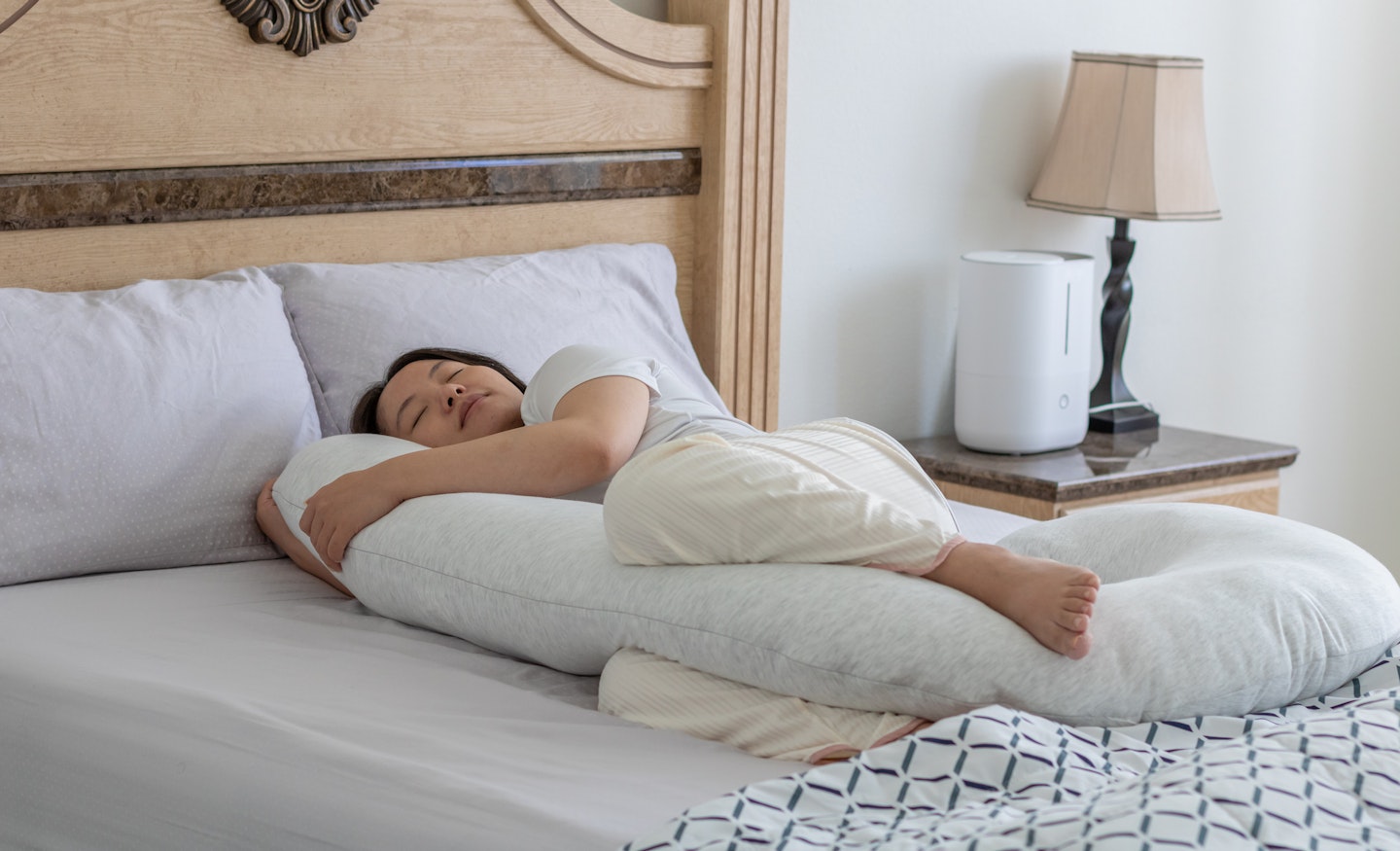We all have our own individual sleeping position we find comfortable, and with so many pillows on the market, finding the perfect one for you can feel like an impossible task, especially when shopping online. So, knowing how to choose a pillow is essential.
Whether you prefer sleeping on one pillow or two, having the right pillow to support your sleeping position throughout the night is a bedroom essential we should all be investing in. To help make life a little easier for you, we've put together a helpful buying guide, covering everything from the fabric, size, filling and firmness, plus tips on picking a pillow based on your sleeping position.
Choosing the right pillow size for your bed and sleeping position
Pillows tend to come in three different sizes:
Standard (L75cm x W50cm) - Your standard pillow is ideal for a single or double sized bed. It's rectangular in shape and will fit a standard sized or Oxford sized pillow case (the Oxford has the extra boarder on the case).
Suitable for: Back sleepers and side sleepers
Kingsize (L90cm x W50cm) - These are larger sized pillows that are most commonly used in the States. These are better suited to larger beds from Kingsize up. You might find your standard pillows look a bit too small on your bigger bed, so it's worth sizing up to some kingsize pillows.
Suitable for: Back sleepers and side sleepers
Square (L65cm x W65cm) - You most commonly find square shaped pillows, or European pillows as they're sometimes called, in hotels as they look quite stylish and modern. Although they're not ideal for sleeping on, they look fabulous on any bed, and they're also great for propping you up in bed, or a great addition of some height if you're struggling to breath at all while sleeping.
Finding the right filling and firmness for your pillow
Pillows can be filled with a huge variety of fibres and materials, and this is often where things can get a little overwhelming.

Down pillows
These are usually filled with duck or goose clusters that sit under a birds feathers. They feel super soft to lie into, almost cloud like, but they do have their downsides (pardon the pun).
Pros:
•Good quality
•Soft (goose tends to be the softer option over duck)
•Puff up easily
Cons:
•Ethically problematic - check the ethical credentials of the company before you buy
•Expensive
•Can bring on allergies
Feather pillows
Cheaper than down but still offering that luxury feeling, feather pillows are again most commonly made from duck or goose pillows.
Pros:
•More affordable than down
•Slightly more supportive and firmer than down
•Luxurious feel
Cons:
•Overtime, feathers can drift and sometimes end up poking through the pillow
•Can go flat overtime
•Ethically problematic like down
•Can bring on allergies
Memory foam
Memory foam pillows are really popular pillows thanks to how supportive they are.
Pros:
•Can mould around your neck and shoulders
•Great for people who suffer with head, shoulder and neck pain
•Less harmful on the environment than other pillow types
Cons:
•Retains heat so can cause overheating at night
•Can have a chemical smell when bought new

Synthetic microfibres
Pros:
•Inexpensive
•Lightweight
•Good for people with allergies
Cons:
•Highly static
•Don't mould around your head contours
•Can cause overheating
Organic wool
Pros:
•Environmentally friendly
•Anti-allergenic
•Supportive
•Temperature regulating
Cons:
•Heavy
•Expensive
•Difficult to wash
Tencel
Pros:
•Durable
•Breathable
•Soft to touch
Cons:
•More expensive
•More susceptible to mildew than other fabrics
If you suffer from allergies
Contrary to popular belief it's not always the fibres of the filling that can set our allergies off. As disgusting as it sounds, our pillows are magnets for dust mites, which are responsible for setting off most allergies in the night.

They are particularly drawn to pillowed filled with natural fibres such as down and feathers, but there are a few things you can do to combat the dust mites.
Firstly, if you have a pillow protector, be sure to wash it on a regular basis to avoid build up of mites. It's also worth noting that some expensive feather pillows are filled with mite-repellent treated feathers, which can in some cases help.
If however you are really struggling, it's most definitely worth buying an anti-allergy pillow, as these shouldn't set off your allergies.
How to choose the best pillow for my sleeping position

Best for side sleepers
To ensure side sleepers get enough support to keep their head, neck and spine aligned while they sleep, they need plenty support from their pillow. That's why a firm, microfibre side-sleeping pillow normally suits side sleepers the best . If you're not keen on a firm pillow, you might find a flatter pillow more comfortable, to help keep your spine aligned.
Best for back sleepers
This is considered the best position to sleep in if you can. Back sleepers don't often need much support to keep their spine and neck supported, as long as they sleep on a supportive mattress, meaning most fills are ideal for back sleepers.
Best for front sleepers
Sleeping on your front can put a lot of pressure on your spine and neck, but the right pillow can help ease any aches and pains. The flatter the better when it comes to front sleepers, and a thin microfibre pillow works best.
Other kinds of pillows to consider
If you're still struggling to find the right pillow for you, there are other kinds of pillow you might want to try out.
Body pillows
Most commonly used for pregnant women in the later stages of pregnancy, body pillows are long, firm pillows that you can cuddle as you sleep. They're great for side sleepers to help give your whole body support.

Leg pillows
These small pillows are designed to fit into the contours of the leg, and sit comfortable between the knees. They promote spinal alignment for side sleepers, and they're great if you're a side sleeper with a firm, high pillow. They also help to relieve any pressure on the hips too.
Orthopaedic pillows
An orthopaedic pillow is ideal if you're regularly struggling with a stiff neck, back pain and headaches as a result of built up tension while you sleep. They're firm, super supportive and contour around your upper body to protect your spinal alignment. They may take some getting used to because of the firmness, but your neck and back will thank you in the long run.
Cooling pillows
Cooling pillows are great if you find you overheat at night or struggle to sleep in the summer months. They work to be breathable and wick away moisture quickly to keep you as cool as possible.
Taking care of your pillows
Did you know that the general advice is to replace your pillows every year to 18 months? This is often not an affordable option for many of us, so there are many ways you can extent the life of your pillow.
Make sure you invest in a good pillow protector that you clean on a regular basis. You should also aim to clean your pillow every six months, following the washing instructions closely to keep the filling in tip top shape. If you're unsure, you may choose to have your pillow professionally cleaned instead.
Every morning, make an effort to fluff your pillows (unless they 're memory foam) to keep them in tip top shape.

Lorna White is a Senior Digital Writer at Yours.co.uk. She was previously a writer at Yours Magazine writing features and news stories before joining the digital team. Lorna loves the great British countryside and likes to spend her spare time out and about in her home of Nottinghamshire walking her dog, Pippin.
